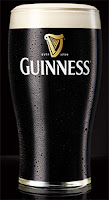 The Irish Gift House has published to our site a series of three articles promoting some wonderful Irish Father’s Day Gift Ideas. The articles are entitled Irish Father’s Day Gifts – Masculine Jewelry, Irish Father’s Day Gifts – Barware, and Irish Father’s Day Gifts.
The Irish Gift House has published to our site a series of three articles promoting some wonderful Irish Father’s Day Gift Ideas. The articles are entitled Irish Father’s Day Gifts – Masculine Jewelry, Irish Father’s Day Gifts – Barware, and Irish Father’s Day Gifts. The first post focuses on a grand selection of manly designs that include Celtic Jewelry for Men along with Celtic Cross Necklaces for Men. Naturally, we also detail the masculine Claddagh rings along with our huge selection of Celtic wedding bands. Both you and dad will be happy to know that all our jewelry is made in Ireland and that each piece is hallmarked by the Irish Assay Office located at Dublin Castle.
The first post focuses on a grand selection of manly designs that include Celtic Jewelry for Men along with Celtic Cross Necklaces for Men. Naturally, we also detail the masculine Claddagh rings along with our huge selection of Celtic wedding bands. Both you and dad will be happy to know that all our jewelry is made in Ireland and that each piece is hallmarked by the Irish Assay Office located at Dublin Castle.Irish bar gifts is the specific subject of our second post. We discuss a large range of items for the dad who enjoys Irish whiskey, imbibes the fruit of the grape, or lifts a pint. Check out a grand selection that includes Irish whiskey glasses along with Irish wine glasses and Irish beer glasses. No matter what your father drinks, The Irish Gift House has the vessel. Specialty designs include our selections of Irish tankards and Celtic goblets; many of these gifts are made in Ireland by Mullingar Pewter using fine lead-free pewter.
Lastly, our most eclectic section is a wide variety of Irish Gifts for Men. This post encompasses additional products that any Irish father would love to receive. Like the previous two articles, these selections focus on dad’s Irish heritage along with the pride associated with the family name. Any of the Irish coat of arms gifts would be considered a fantastic choice. Select from Irish coat of arms glasses and Irish coat of arms shields along with Irish coat of arms clothing and Irish cost of arms plaques, just to name a few of the categories.
The selection of personalized Irish gifts will also evoke pride of heritage. Many of these choices pertain to the home in the form of house plaques that feature an address or the family name. The personalized Irish house plaques are accented with icons that include the shamrock along with the Claddagh or Celtic knot-work. You may even select a design that includes a traditional Irish blessing.
This extensive category also features Irish clothing that includes the famous flat caps which are woven of fine Irish wool. You may also be interested in an authentic blackthorn walking stick which is suitable for both mobility and decorative considerations.
There is little doubt that dad will enjoy any of the Irish Father’s Day Gifts that are available from the family owned The Irish Gift House.




















